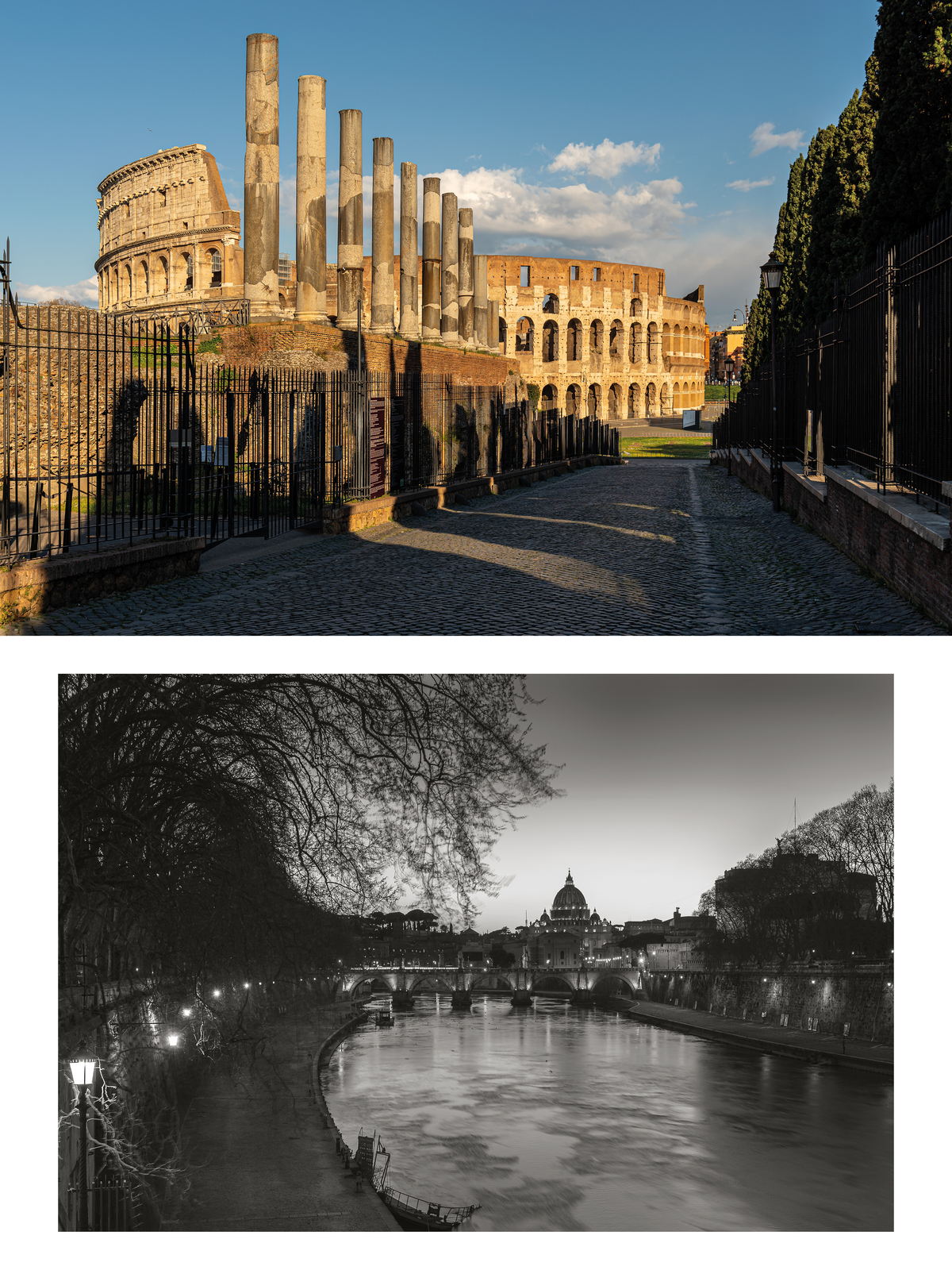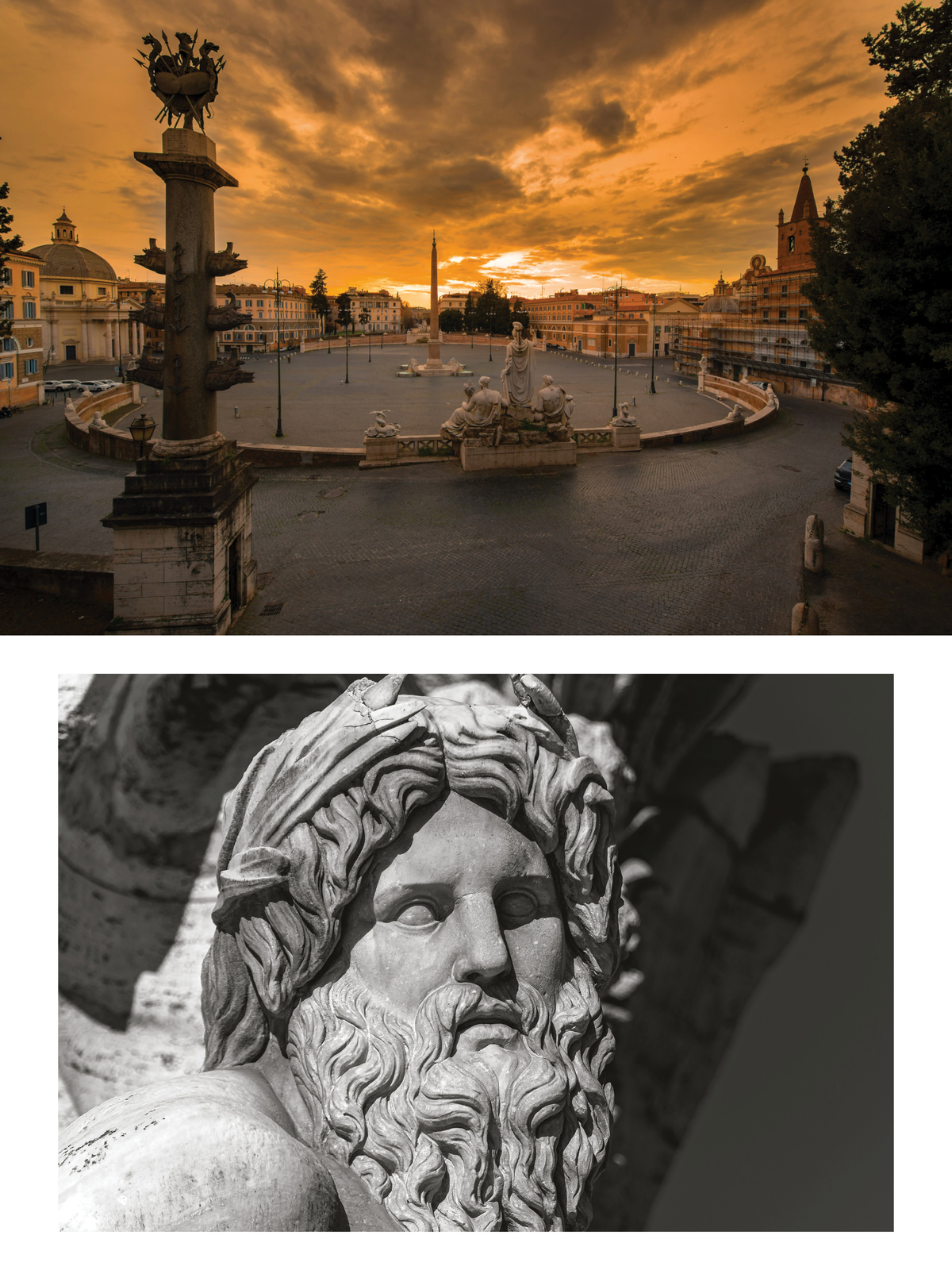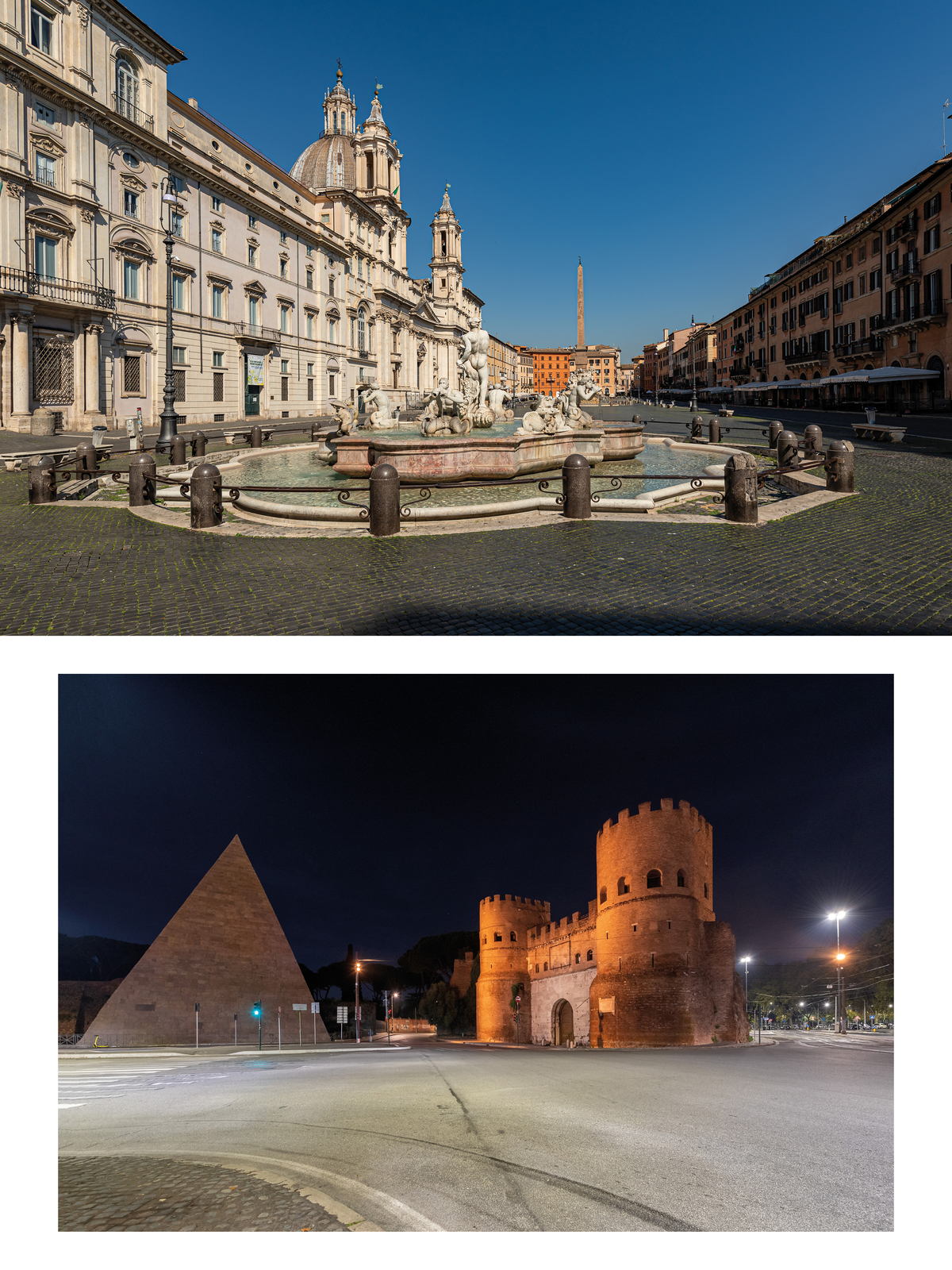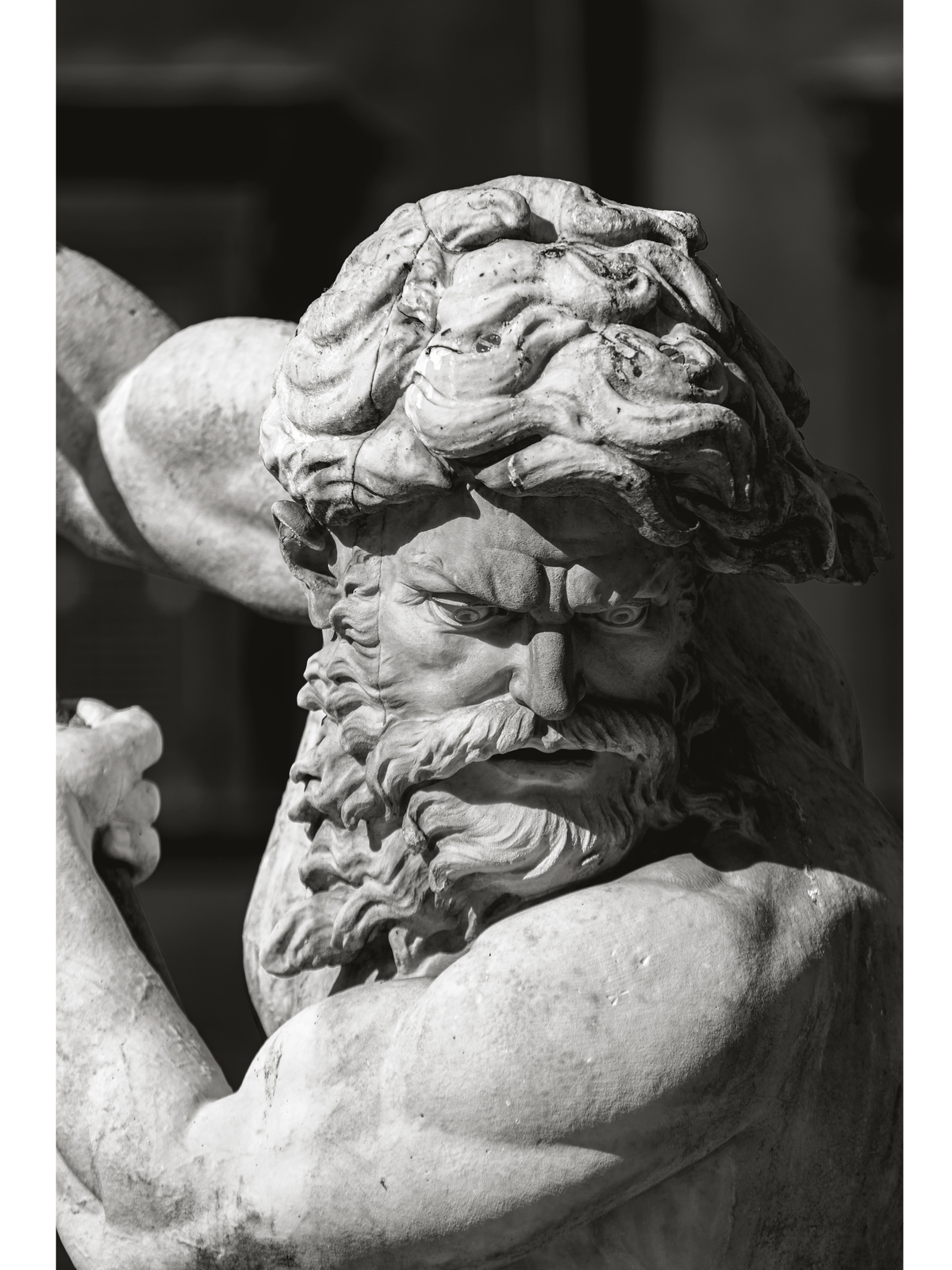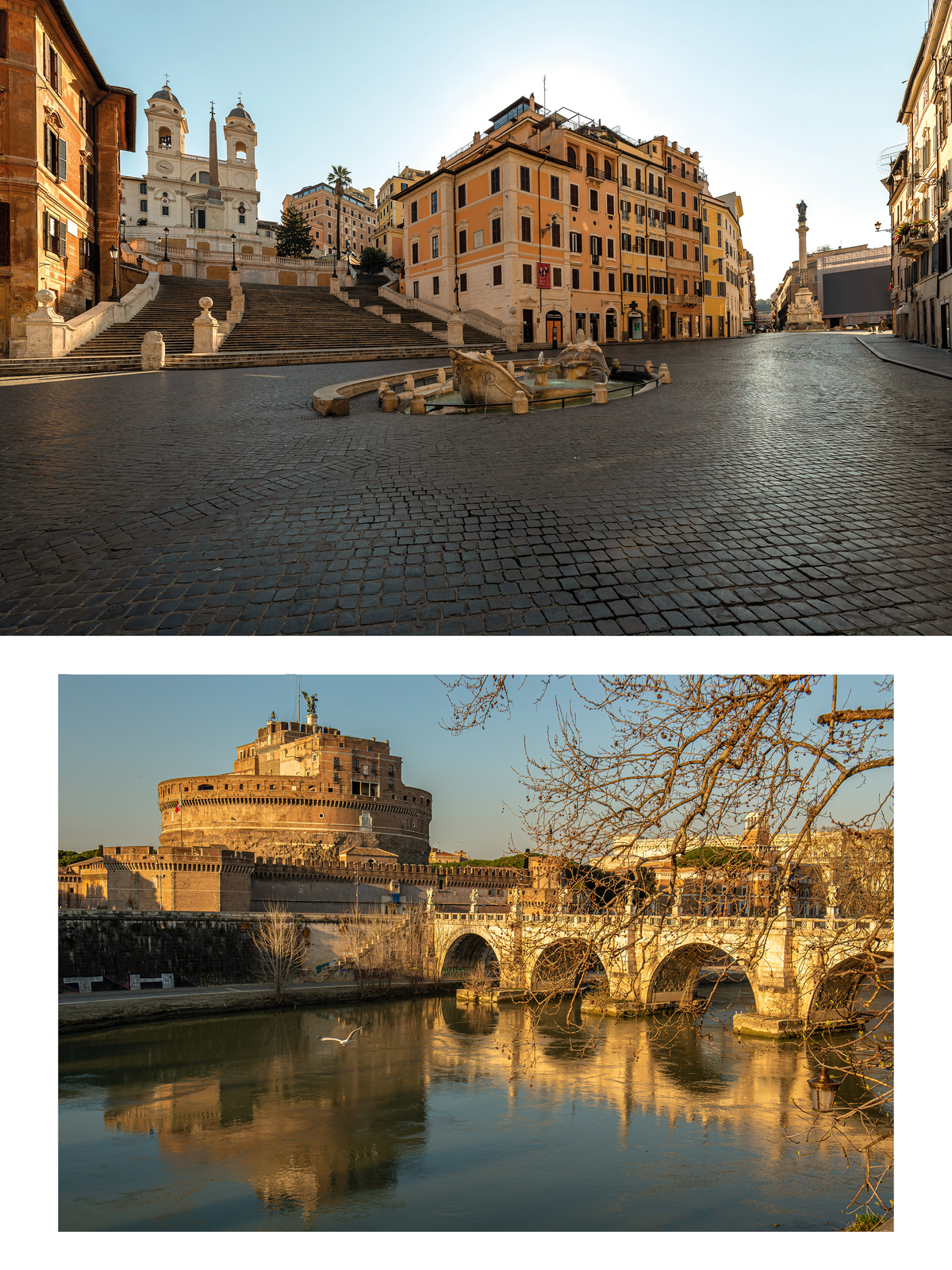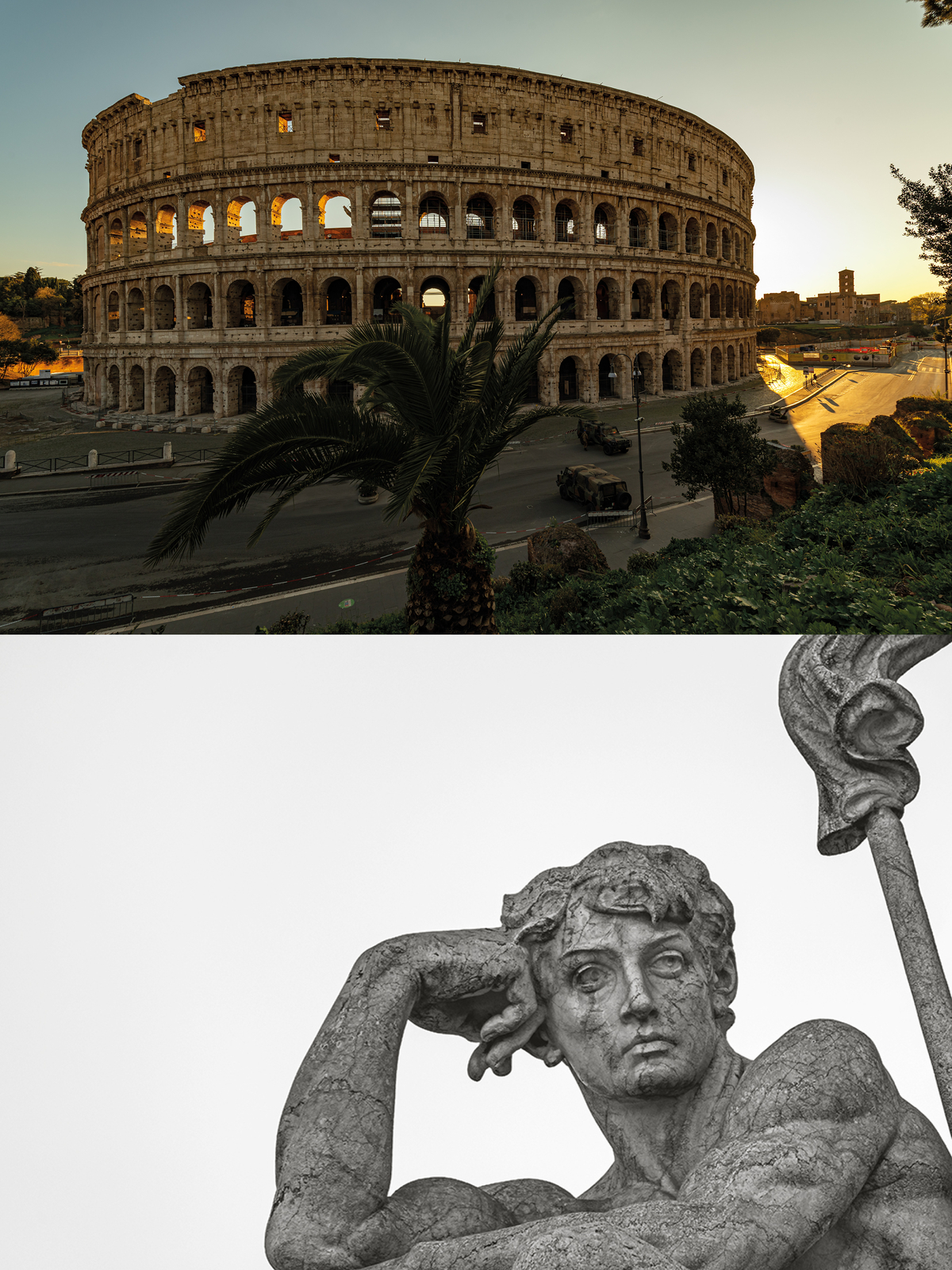In ancient times, Rome was called caput mundi (capital of the world) because it sat at the helm of the Roman Empire, and its cultural influence was unrivaled. It remained the world capital until 476 A.D., when its last emperor, Romulus Augustus, was deposed by the Germanic chieftain Odoacer. Despite the rise of Northern Europe, and then of Christianity, conquerors admired the ancient civilization’s beauty, and they repurposed as many of the monuments as they tore down. The Renaissance architect Sebastiano Serlio observed, “The greatness of Rome can be seen in its ruins.” Today, its inhabitants navigate these majestic archaeological sites every day as they go to work or stroll to the grocery store.
During the early months of the pandemic, cities around the world lost a defining characteristic—people. In America, the spring of 2020 was marked by vacant streets, abandoned shops, and empty parking lots. In Rome, the Piazza del Popolo and the Trevi Fountain were often deserted. Giorgio de Chirico’s Piazza d’Italia paintings come to mind. The skies a heavy blue-green, the statues casting gloomy shadows, and the ancient porticoes left forsaken, the city seems an almost metaphysical space, cleared of human presence.
During those difficult months, Moreno Maggi, one of Italy’s photographers of note, wandered through the Eternal City’s empty streets, shooting monuments such as the Colosseum, the Vatican, and the Capitol. He captured the Arch of Titus, which preserves the memory of the destruction of the Temple of Jerusalem, and the Santa Maria Sopra Minerva, which was constructed atop temple ruins in the 14th century.
These photographs have been collected in Maggi’s latest book, Rome: Silent Beauty; its text is by Massimo Recalcati and Claudio Strinati. Leafing through its pages, I couldn’t help thinking of Goethe’s comment in Italian Journey (1816): “Only in Rome is it possible to understand Rome.” —Elena Clavarino

Rome: Silent Beauty is out now from Rizzoli
Elena Clavarino is the Senior Editor at AIR MAIL

